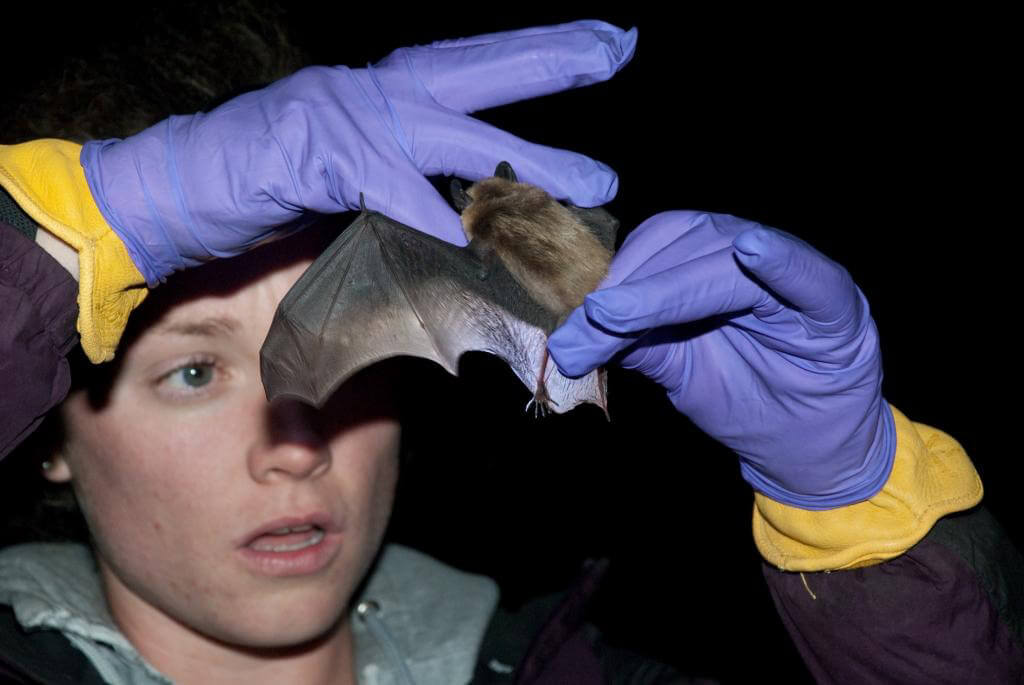Yellowstone Bat Study
Although most visitors to Yellowstone may not list the bat as a top mammal they would like to see, we should all be glad for these amazing creatures who are hard at work each night. Thirteen bat species can be found in Yellowstone, and each plays an essential role in the health of humans and their ecosystems by helping suppress insects — including those pesky mosquitoes. From the Big Brown to the Spotted, Western small-footed and Hoary, each bat species is an insect-eating machine, the only flying mammal in the world and lives 10-30 years. Let’s hear it for these bat-to-the-bone guardians of the night skies.
Fast Facts
-
13 species of bats have been identified within Yellowstone.
-
Yellowstone’s bats are all insectivores (insect-eaters).
-
Most bats hibernate, emerging in mid-April.
-
Many bats live 10-30 years.
-
Most bat species rear a single pup per female each year.
-
Bats use an echolocation system to navigate and find food in the dark.
There is no greater threat to the survival of bats in North America than the disease White-nose syndrome (WNS). This fungal disease has devastated bat populations in the eastern United States and Canada, leading to regional extinctions of several species. WNS has resulted in the listing of bat species under the Endangered Species Act in the US and the federal Species at Risk Act in Canada. Currently, the disease has not been observed in Yellowstone National Park but it is spreading across Wyoming and Montana.
A coordinated effort among federal, state, and private entities continues to explore ways to slow or halt the spread of WNS in North America. Biologists in Yellowstone are closely monitoring the park’s important bat population and, with your support, will be able to increase their WNS detection resources and capabilities.

Project Overview
The Yellowstone Bat Study team’s white-nose syndrome detection efforts include the following methods:
- Mist net captures allow biologists to collect samples (skin swabs) for WNS detection at roost sites.
- RFID (radio-frequency identification) tagged bats to estimate population size in little-brown bats (species most hard hit by WNS).
- Acoustic detectors deployed throughout the park to record bats’ echolocations.
- Collection, analysis, and storage of all samples.
- Mapping the distribution of bat species.
A coordinated effort among federal, state, and private entities continues to explore ways to slow or halt the spread of WNS in North America. Biologists in Yellowstone are closely monitoring the park’s important bat population and, with your support, will be able to increase their WNS detection resources and capabilities.
Photos courtesy of NPS